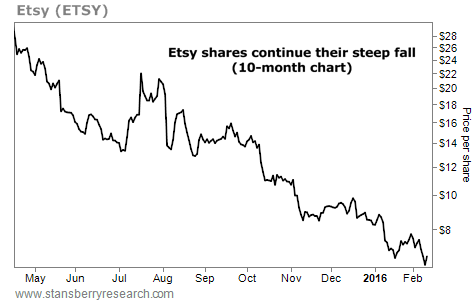| Home | About Us | Resources | Archive | Free Reports | Market Window |
|
Editor's note: A couple years ago, talks of "high-frequency trading" and "a rigged stock market" captured the headlines. You couldn't turn on CNBC without hearing about it. It's still on some people's minds. In today's essay – from our friend Alexander Green – you'll learn what you can start doing right now so that you'll never have a reason to believe you've been wronged...
Three Simple Steps to Beat a 'Rigged' Stock MarketBy
Friday, February 12, 2016
Best-selling author Michael Lewis made headlines a couple years ago when he argued in his book Flash Boys that "the stock market is rigged."
Lewis points out that high-frequency traders use sophisticated computer algorithms to execute orders in a fraction of a second, effectively front-running the rest of us.
This is often true.
In an interview with 60 Minutes in 2014, he complained that a) nothing has been done about the problem and b) the lack of furor from individual investors is inexplicable.
However, there's a good reason nothing has been done and there isn't any public outcry.
Lewis is making a mountain out of a molehill...
Yes, high-frequency traders have a clear technological advantage. And they are making a bundle of money with it. But the effect on you and me is miniscule.
High-frequency traders are essentially vacuuming up nickels every day. They make tens of thousands of trades on millions of shares, gaining a penny advantage here and a two-penny advantage there.
You probably wouldn't blow your top if you discovered one day that a kid had grabbed the change out of the ashtray in your car. That's about the annual effect these guys have on your trade executions.
What's more, the extremely high level of volume they generate narrows the spread on thousands of stocks to as little as a penny a share. You could argue that their real net effect is to save you money.
However, if you find high-frequency trading alarming, there are three simple steps you can take to avoid it...
No. 1: Don't Day Trade
I would tell you this – as I did more than 15 years ago when this first became popular – even if high-frequency trading technology didn't exist.
Day trading is gambling, pure and simple. Over any decent period of time, share prices follow earnings. But in a single session, stock prices are a total crapshoot, moving up and down on all sorts of factors that are completely divorced from corporate fundamentals.
An ordinary investor who is repeatedly trading in and out of stocks during the day is playing a foolish guessing game. (And may even have a gambling problem.) The folks making dozens of trades a day are the ones most affected by tiny price manipulations.
If high-frequency traders caused you to give up your day-trading habit, thank them. They did you a big favor.
No. 2: Always Use a Limit Order
If a stock you want to buy is trading at $25.50, don't put in a market order and then act surprised when you get filled at $25.52. Put in a limit order at $25.50 and wait a few minutes. If you don't get filled immediately, the stock may be moving higher. So get another real-time quote, cancel your original order, and adjust your limit. You'll get filled.
If you use limit orders, high-frequency traders can't affect your execution price.
No. 3: Base Your Sell Decisions on Closing, Not Intraday, Prices
Flash crashes and high levels of intraday volatility caused me to stop recommending the use of intraday prices and stop orders.
It's a bit unsettling to see a stock open at $20, trade down to $16.50 and then close at $19.75.
Base your sell decisions on closing prices and no market maker or high-frequency trader can pick you off at the intraday low. There is a chance, of course, that stocks may close at the day's low. But you have eliminated the risk of getting knocked out in a volatile session before the market (or your stock) recovers.
In short, Lewis is wrong. The stock market isn't rigged. That's why there isn't any outrage. That's why no one has been prosecuted. That's why there haven't been any regulatory reforms.
Even if you're a skeptic – or a conspiracy theorist – follow the three steps I've outlined above and you won't have a reason to even imagine you've been wronged.
Good investing,
Alexander Green
Further Reading:
Get more of Alexander's timeless advice here...
Is It Time for Investors to Panic?
"History shows that every bull market is followed by a bear market. And that's OK, because every bear market is followed by another bull market. The market's long-term trend is higher highs and higher lows." Three Words That Will Save Your Life
"Want to change your life and solve your problems, starting today? Say three simple words..." Market NotesA REMINDER TO AVOID POPULAR 'STORY STOCKS' Today's chart is another lesson in why we recommend avoiding "market darlings"...
We're talking about the recent performance in online marketplace Etsy (ETSY). The website is a popular platform for people to buy jewelry, artwork, and other handmade goods from sellers.
The problem? Online retail giant Amazon has announced plans to launch its own version of a handmade marketplace. Its active customer base sits around 280 million users – 13 times the size of Etsy's users – meaning if it catches on, Etsy could be in big trouble.
And "cracks" are already starting to appear. Since going public last April with a valuation of more than $2 billion, shares have gotten clobbered. The company's market cap – the share price multiplied by the number of shares outstanding – sits around $750 million today. And the stock, which once traded for more than $35 just 10 short months ago, has fallen nearly 80% to less than $7 per share...
 |
Recent Articles
|



